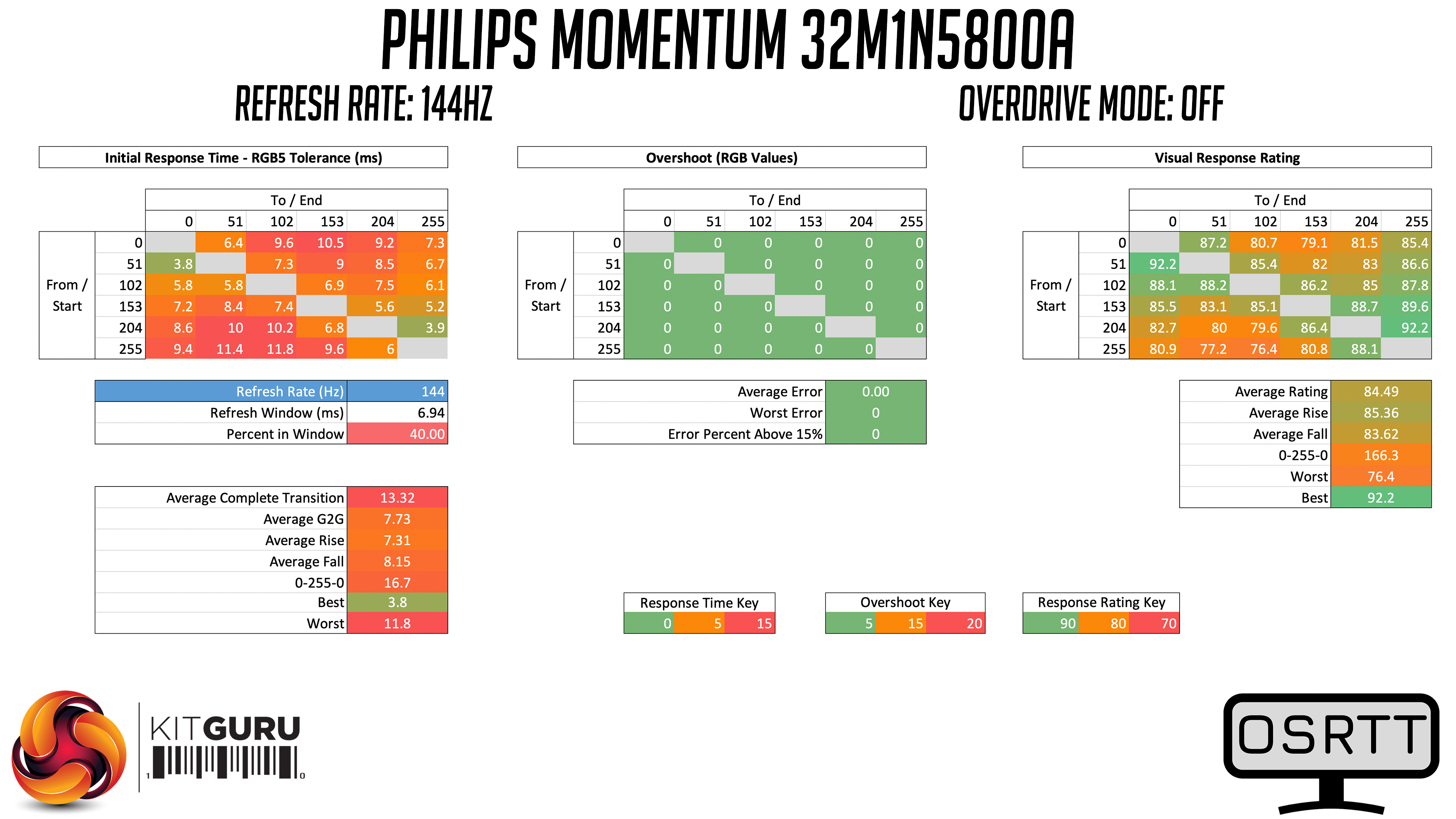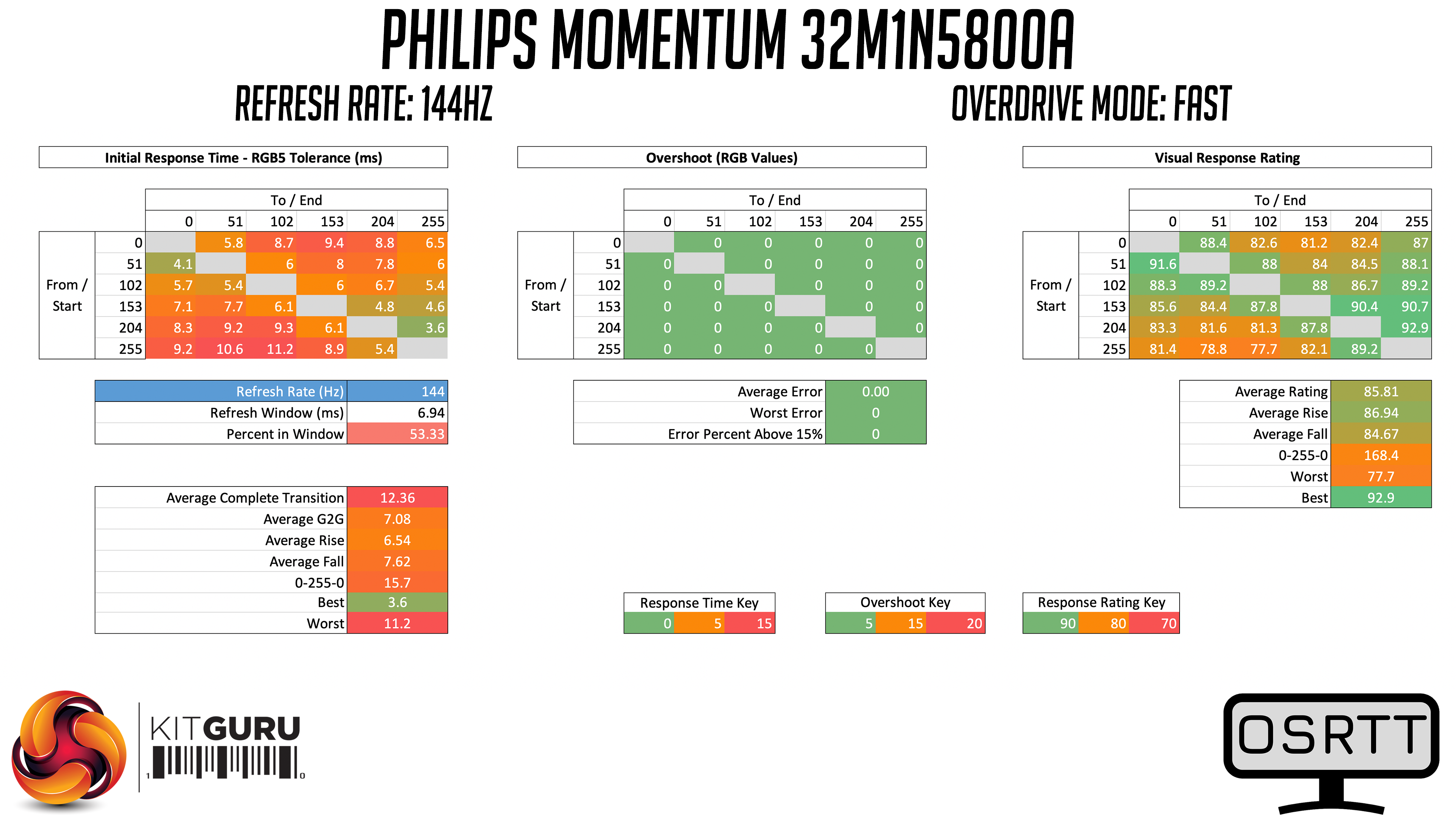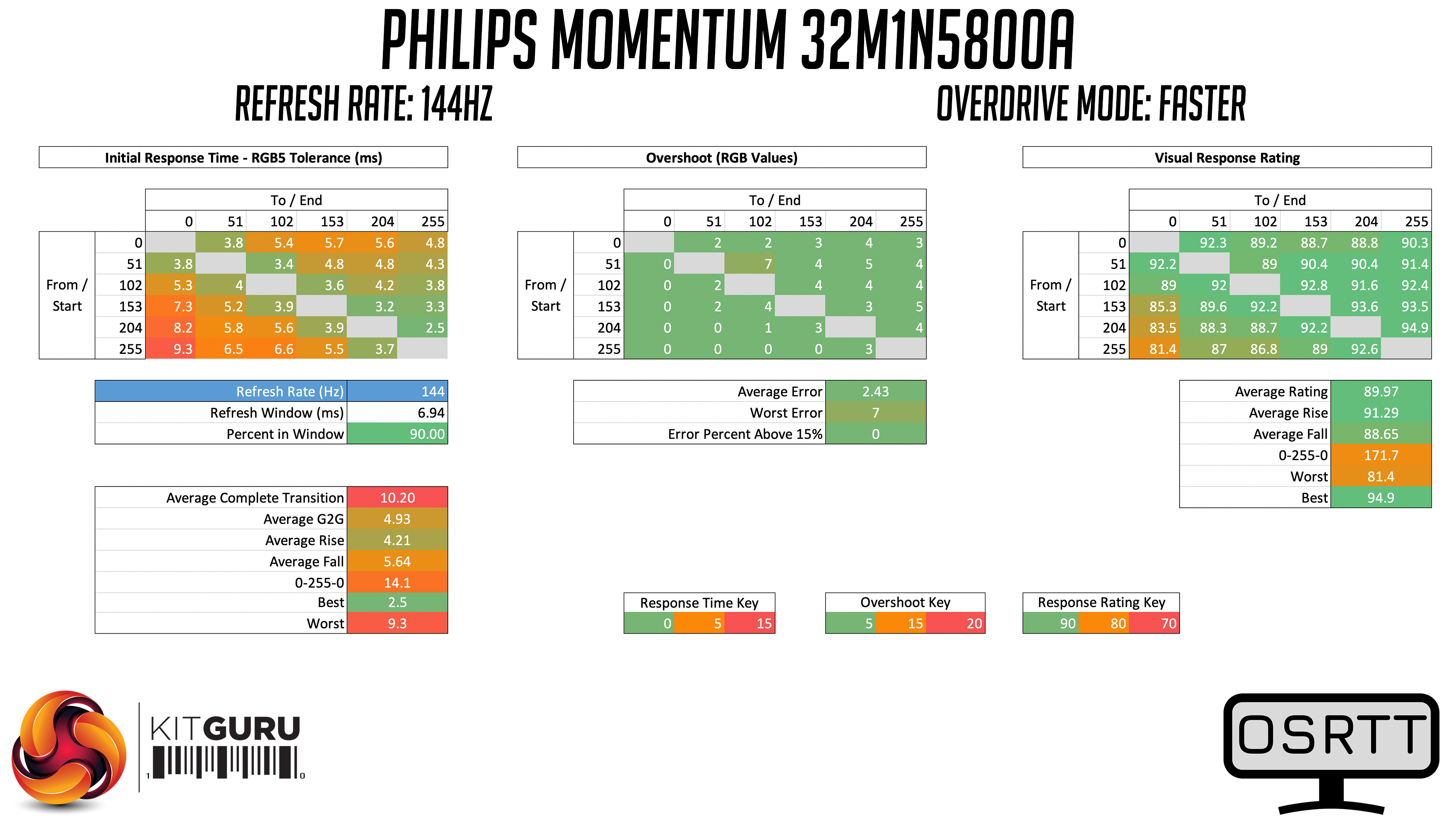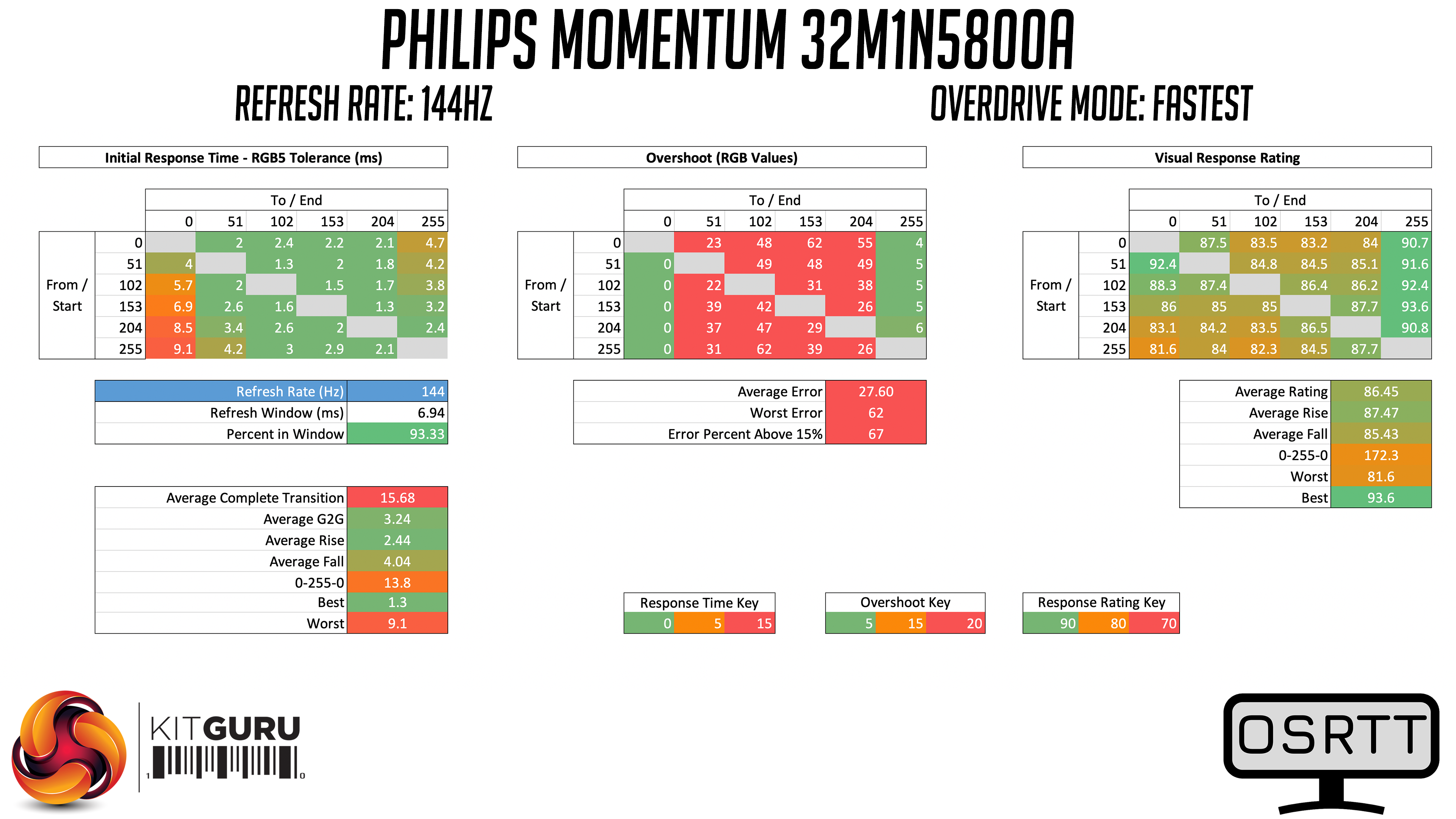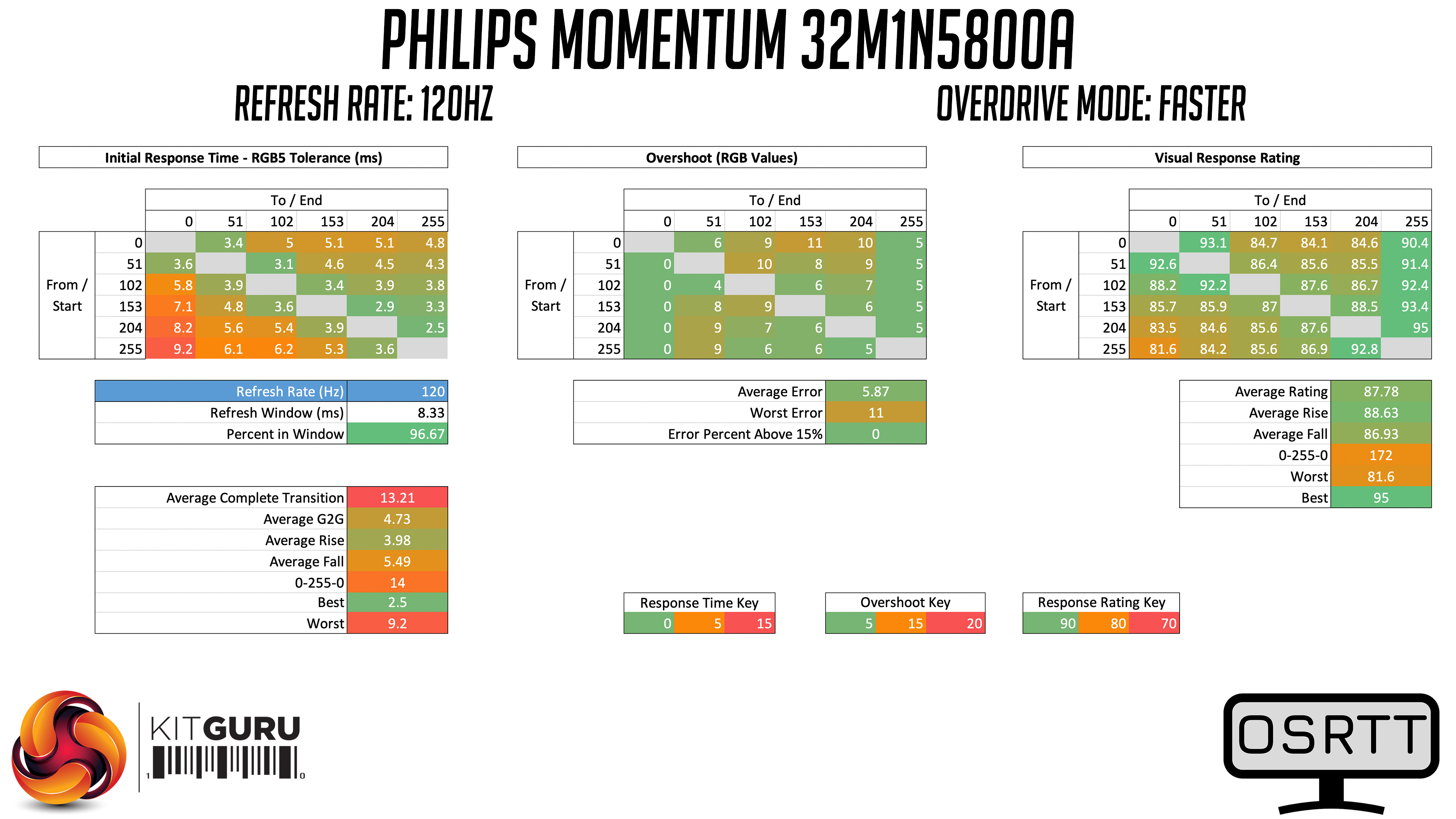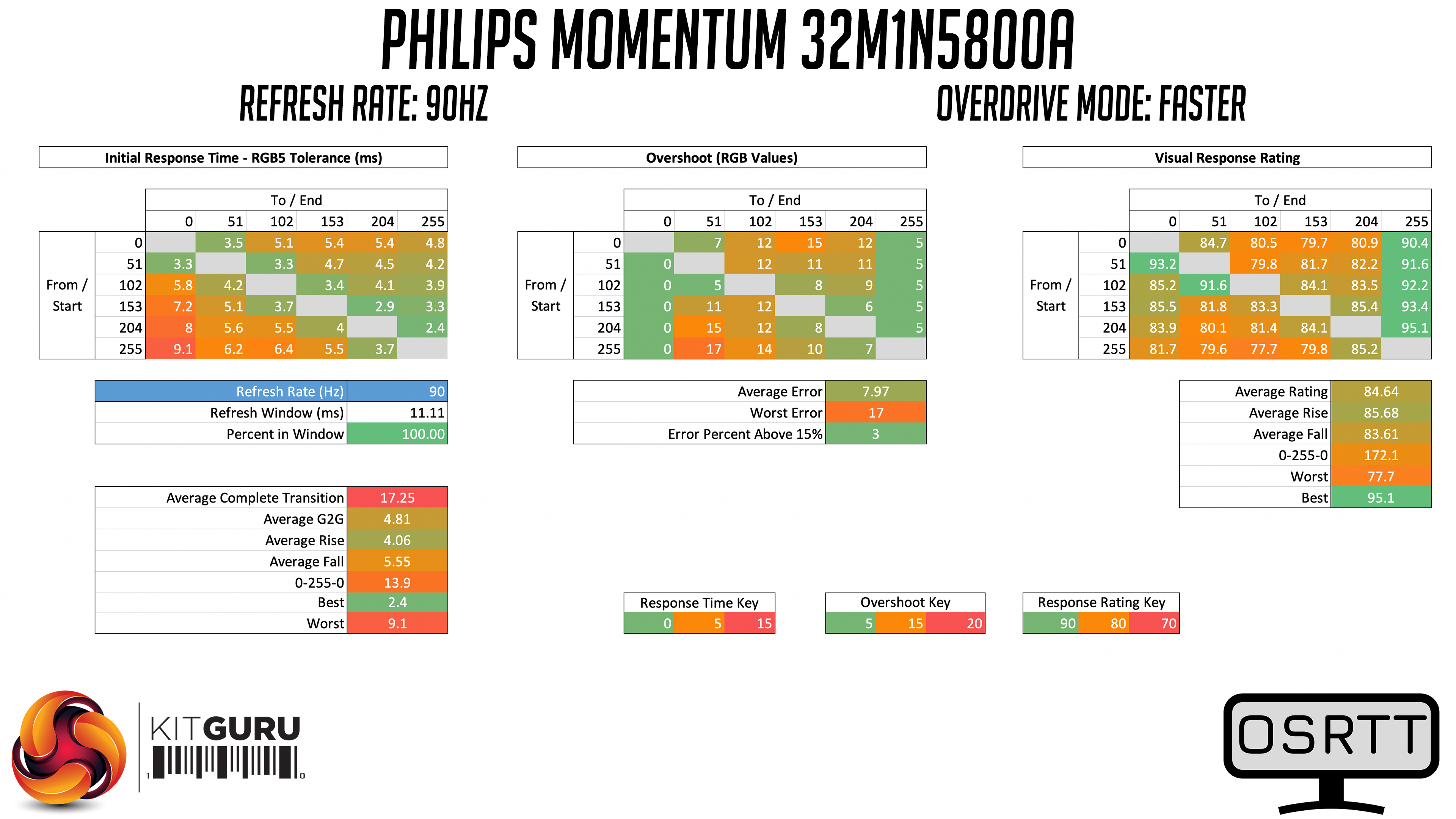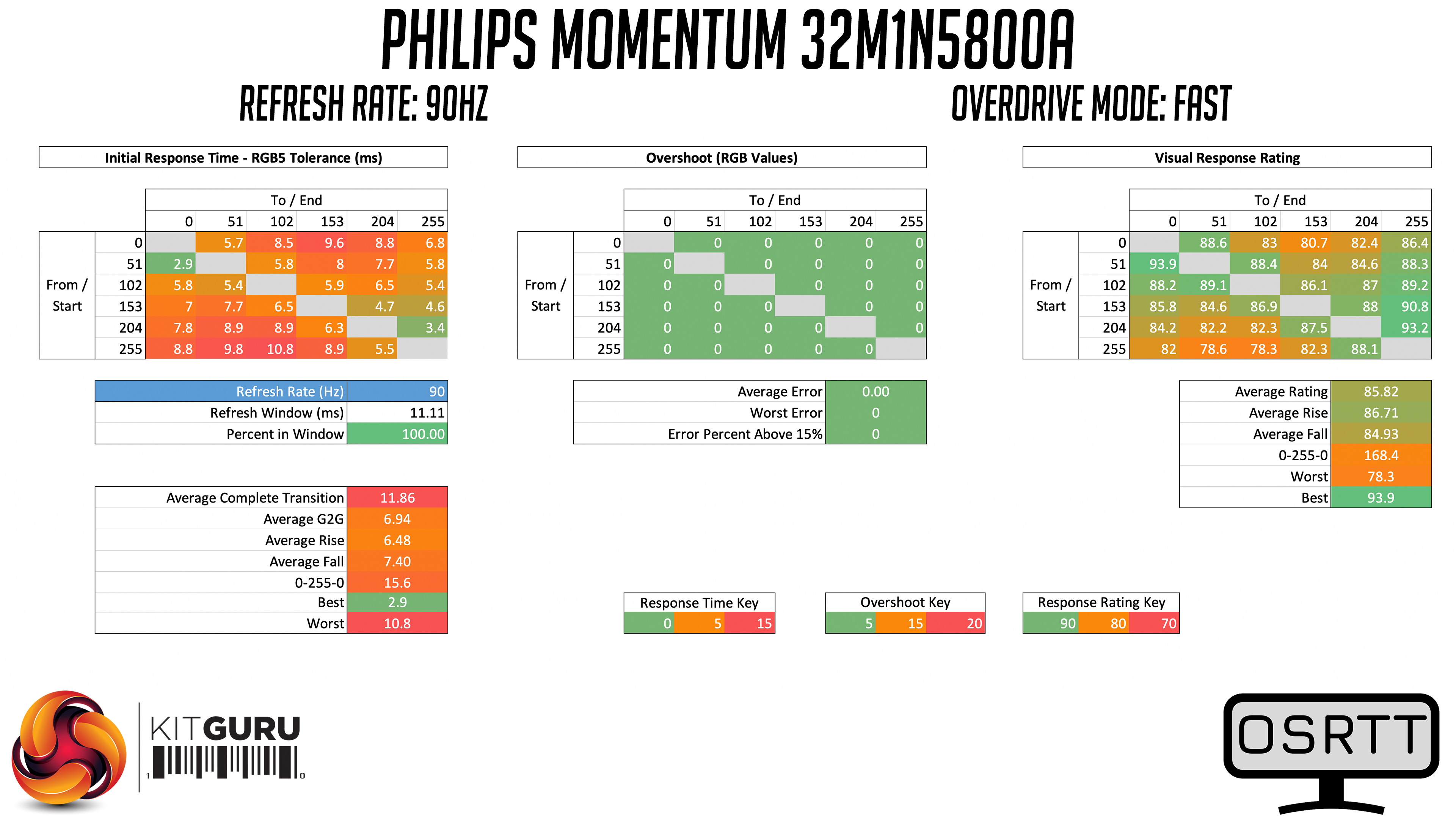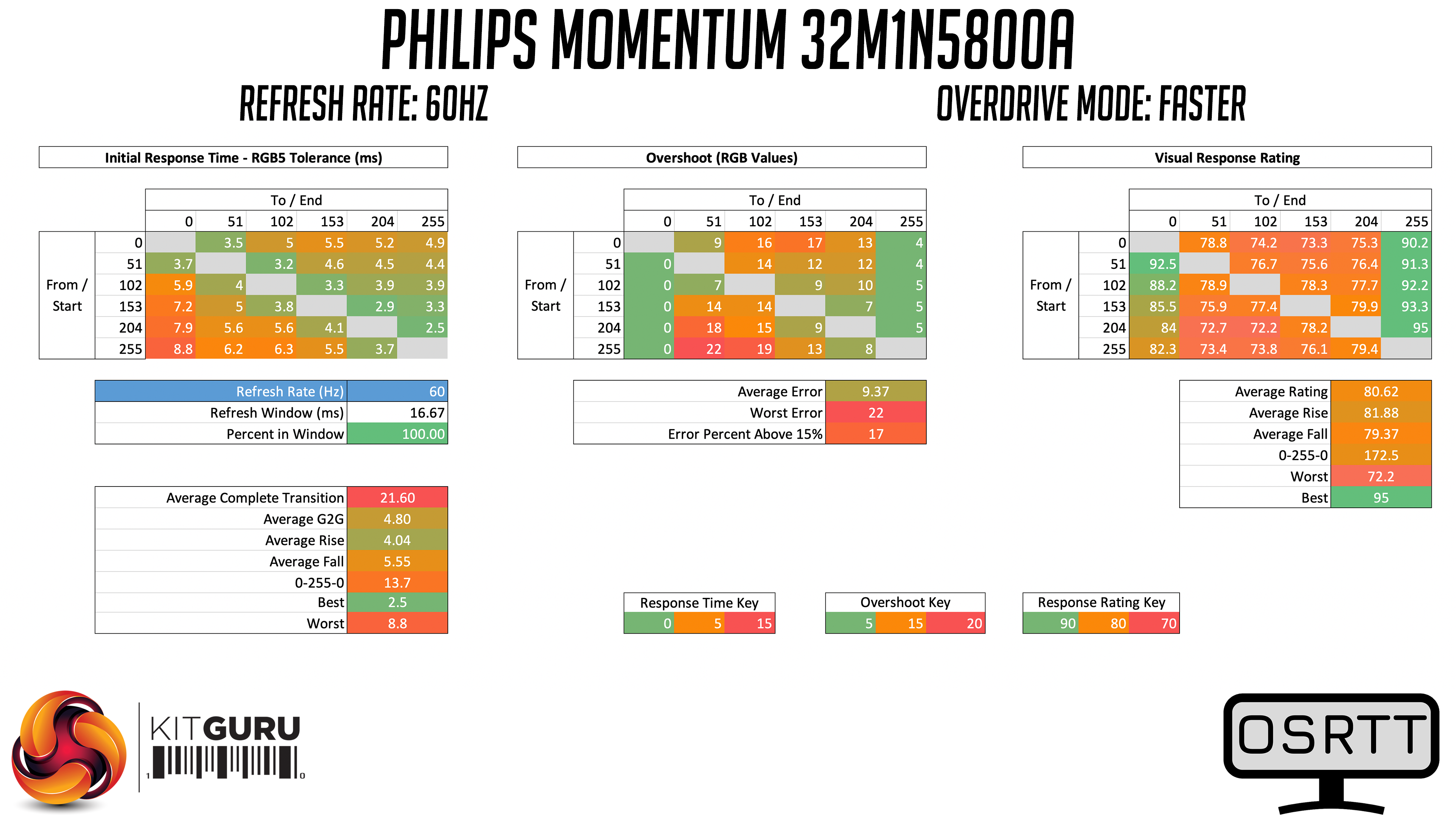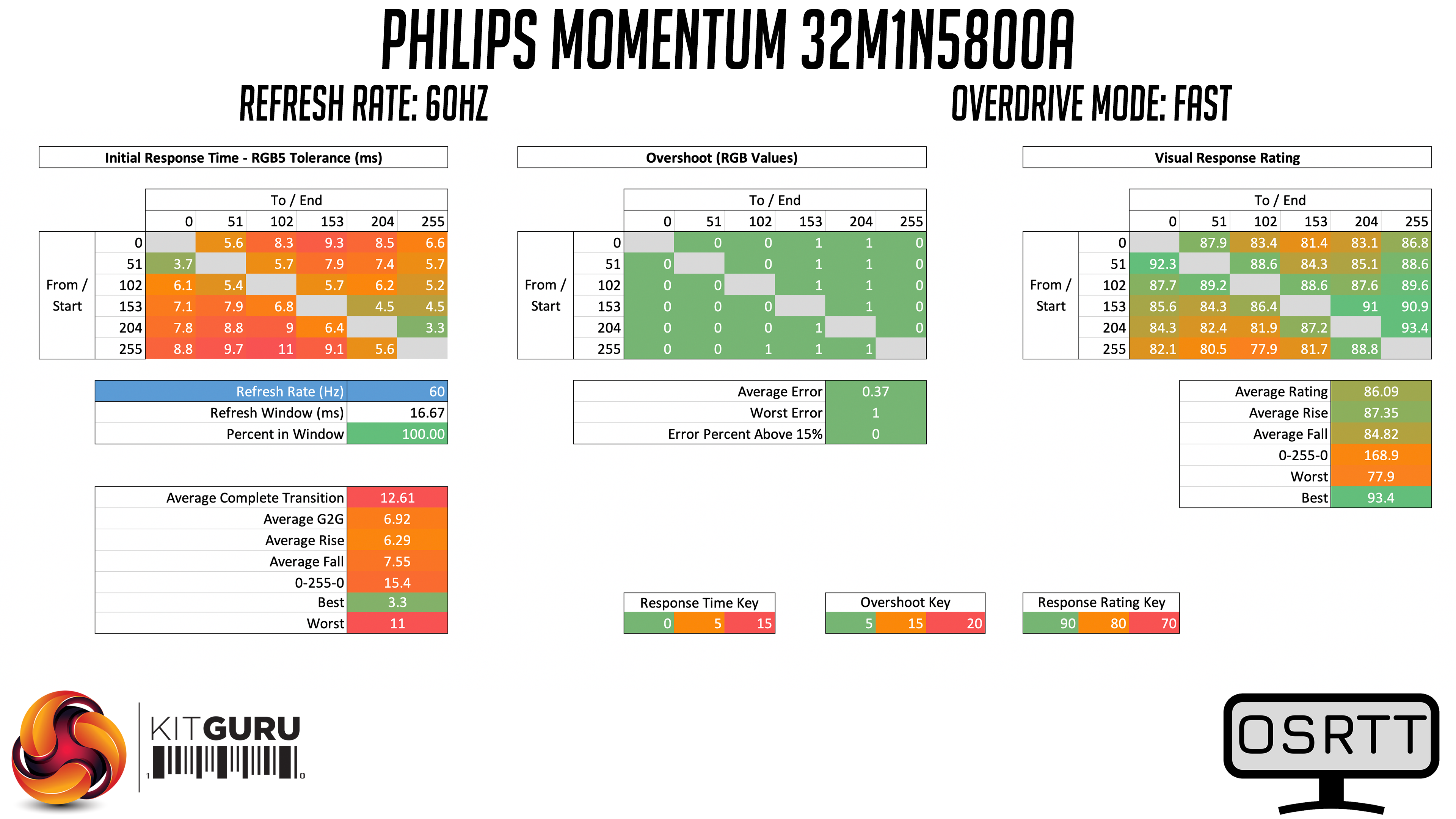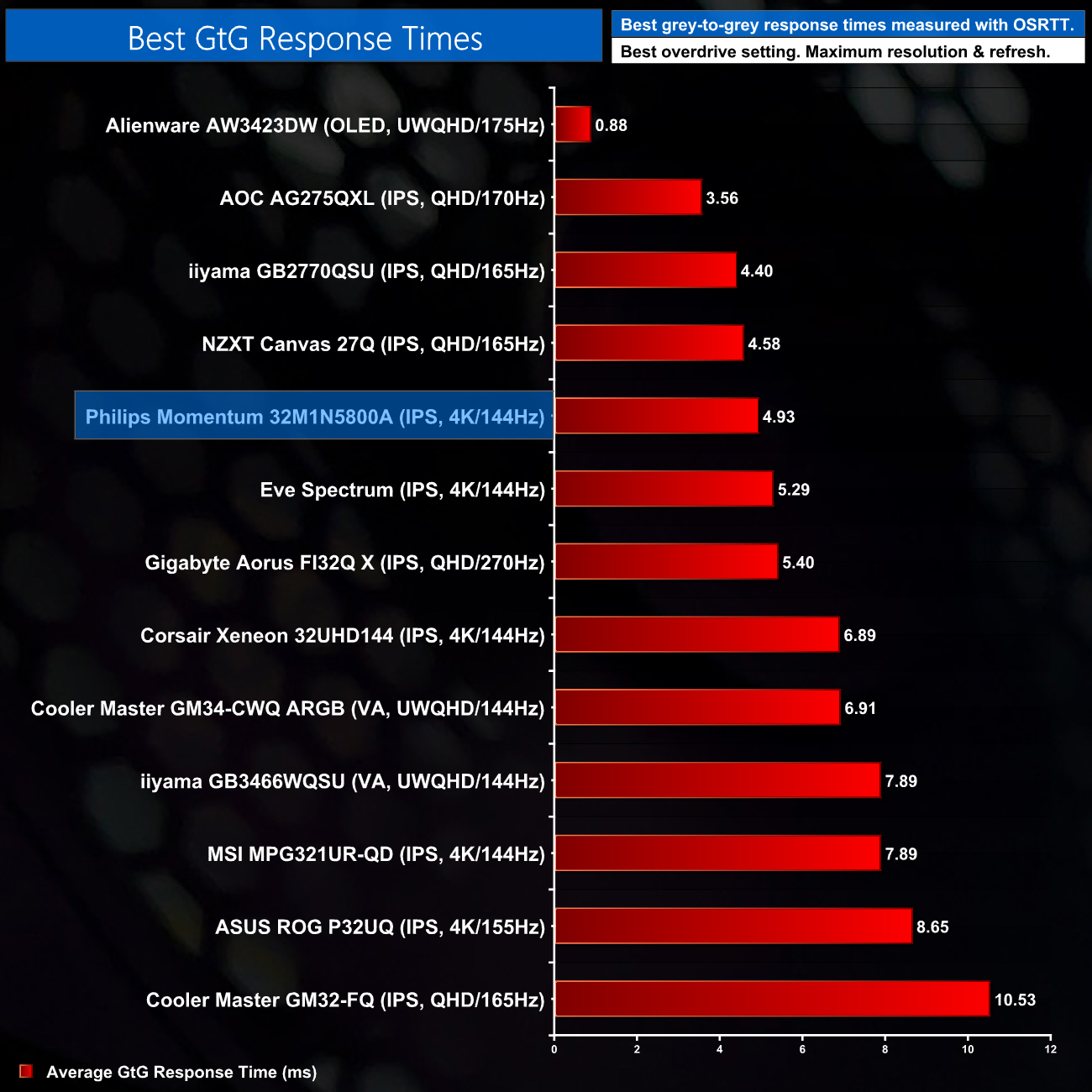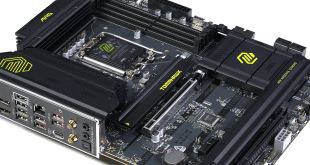Monitor response time testing is a new addition to our reviews, where we use the Open Source Response Time Tool (OSRTT), developed by TechTeamGB. This measures grey-to-grey response times and presents the results in a series of heatmaps, the style of which you may be familiar with from other reviews.
Initial Response Time is the time taken for the panel to transition from one colour to another, where lower values are better. We present the initial response time, so overshoot is not taken into account and is measured separately. We use a fixed RGB 5 tolerance for each transition.
Overshoot is the term given for when a monitor's transition exceeds or goes beyond its target value. So if a monitor was meant to transition from RGB 0 to RGB 55, but it hits RGB 60 before settling back down at RGB 55, that is overshoot. This is presented as RGB values in the heatmaps – i.e. how many RGB values past the intended target were measured.
Visual Response Rating is a metric designed to ‘score' a panel's visual performance, incorporating both response times and overdrive. Fast response times with little to no overshoot will score well, while slow response times or those with significant overshoot will score poorly.
We test the 32M1N5800A at a range of refresh rates, using the four overdrive modes found within the OSD.
144Hz
Starting at 144Hz with overdrive off, this gives us a good idea of the panel's native performance, and it's not bad at all – with an average grey-to-grey response time of 7.73ms, this bodes well for our testing of the three overdrive modes.
Enabling the Fast overdrive mode isn't particularly effective at 144Hz as it only slightly improves on average response times, now hitting 7.08ms, so it's not much faster than no overdrive at all.
The Faster mode is the best of lot. This improves response times significantly, with a new average of 4.93ms, which is not a bad result at all. Fall times do seem to be the biggest problem area for the 32M1N5800A, which you can see in the bottom left of the heatmap, particularly that transition from full white back to full black, but overall response times are much improved.
The Faster overdrive mode does start to exhibit a touch of overshoot, but it's barely worth mentioning – with a biggest error of just 7 RGB values, this was not noticeable at all in practice.
The last overdrive mode is called Fastest, and unfortunately this is only included so Philips can claim a ‘1ms response time' on the box, as the overshoot is ludicrously high. Don't even bother trying out this mode as it is simply unusable.
I do think that is a shame as the Faster overdrive mode has very little overshoot, but Fastest has way too much. Ideally there would be a middle option to push response times that bit faster with an acceptable amount of overshoot, a reason why I would love to see monitor manufacturers implement user-configurable over drive.
120Hz
It's also slightly unfortunate that there's no variable overdrive for the 32M1N5800A. The Faster mode is the best option at 144Hz and 120Hz, though it does overshoot a bit more at the latter refresh rate.
90Hz
Once we get down to 90Hz however using the Faster overdrive mode, the overshoot does become more noticeable and I wouldn't recommend using this mode.
Instead, the Fast mode works best at 90Hz. It's response times aren't super-fast, with an average of 6.94ms, but that's still well within the 11ms refresh window and there's no overshoot either.
60Hz
Likewise at 60Hz, the Faster mode is unusable due to the overshoot, so we recommend using the Fast mode.
For adaptive sync gamers then, it's a shame there's no single overdrive mode, but as a quick summary we recommend the Faster mode if you're pushing over 90FPS, but below that stick with the Fast mode.
Taking a quick look at relative performance then, using the best overdrive mode at the maximum refresh rate, the Philips 32M1N5800A is towards the top end of our chart. Importantly, it's decently faster than some of its key rivals, including the Corsair 32UHD144, the ASUS PG32UQ and the MSI MPG321UR-QD.
 KitGuru KitGuru.net – Tech News | Hardware News | Hardware Reviews | IOS | Mobile | Gaming | Graphics Cards
KitGuru KitGuru.net – Tech News | Hardware News | Hardware Reviews | IOS | Mobile | Gaming | Graphics Cards


